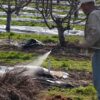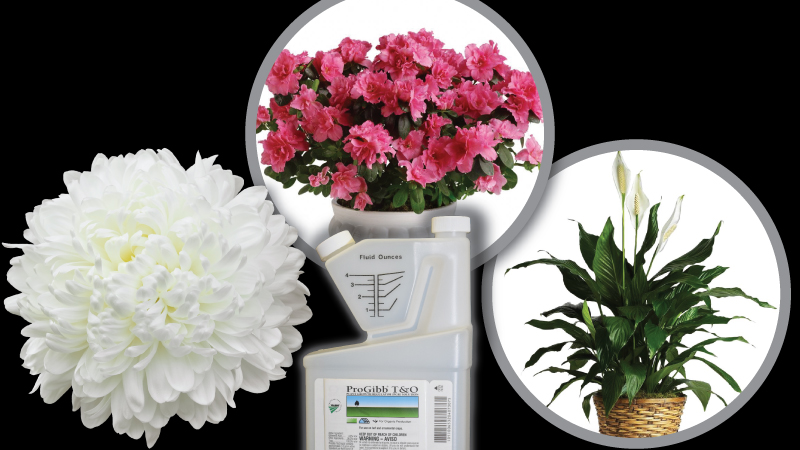
The successful use of Plant Growth Regulators (PGRs) in ornamental horticulture is not only a science, it’s also an art. Perfection sometimes seems like a matter of trial and error, as there are a lot of variables involved in plant growth and development, species-specific PGR responses, etc. With all of the potential benefits and effects of a PGR like gibberellic acids (the active ingredient in ProGibb T&O), it can become somewhat complex and disconcerting to figure out exactly when and why to use it. That’s why we wanted to take a moment to break down the benefits, and give you some example situations in which ProGibb T&O can save the day.
Benefits of ProGibb T&O:
- Promotes plant growth through cell enlargement
- Elongates plant and flower stems
- Reduces crop time
- Induces flowering, fruit set, and fruiting
- Breaks dormancy and delays senescence
- Increases seed germination
ProGibb T&O Labelled Crops:
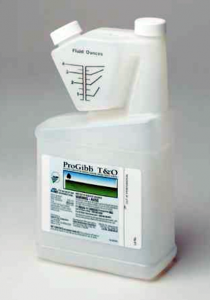 Ornamental Crops
Ornamental Crops
- Azalea
- Calla Lily
- Camellia
- Geranium
- Pompom Chrysanthemum
- Spathiphyllum (Peace lily) and other Araceae
- Cut Flowers
- Aster
- Baby’s Breath (Gypsophila)
- Column Stock (Matthiola)
- Delphinium
- Larkspur
- Queen Anne’s Lace (Ammi)
- Statice (Limonium)
- Sweet William (Dianthus)
- Turfgrass
- Bermudagrass
- Bedding Plants
- Annual and Perennial Potted Crops
- Field Grown Ornamentals
- Bulb Crops
ProGibb T&O for your Azalea Crop:
 Gibberellins can be a powerful tool in the management of your Azalea crop, and have a couple of practical uses throughout the crop cycle. During vegetative growth, ProGibb T&O can be applied as a foliar spray beginning 2-3 weeks after each pinch in order to inhibit flower bud initiation during vegetative growth. These treatments can be repeated on a weekly basis for 1-2 weeks after first application, up to a maximum of three applications, in order to achieve the desired vegetative growth results before flower bud development begins.
Gibberellins can be a powerful tool in the management of your Azalea crop, and have a couple of practical uses throughout the crop cycle. During vegetative growth, ProGibb T&O can be applied as a foliar spray beginning 2-3 weeks after each pinch in order to inhibit flower bud initiation during vegetative growth. These treatments can be repeated on a weekly basis for 1-2 weeks after first application, up to a maximum of three applications, in order to achieve the desired vegetative growth results before flower bud development begins.
ProGibb T&O can also be applied to Azalea crops later in the crop cycle, as a partial replacement of cold treatment to break flower dormancy.
ProGibb T&O for your Calla Lily Crop:
 Gibberellins can increase the flowering of your Calla Lily crop, through the use of a pre-planting rhizome or tuber soak. Using a 500 ppm solution, you can soak your rhizomes or tubers for 10 minutes each, and then plant them in their growing media. This will lead to increased flowering of your plants, and ultimately increase appeal for customers.
Gibberellins can increase the flowering of your Calla Lily crop, through the use of a pre-planting rhizome or tuber soak. Using a 500 ppm solution, you can soak your rhizomes or tubers for 10 minutes each, and then plant them in their growing media. This will lead to increased flowering of your plants, and ultimately increase appeal for customers.
ProGibb T&O for your Camellia Crop:
 Gibberellins can substitute for chilling requirements for Camellia in order to increase bloom size. The application method for this usage pattern is relatively simple: Just dilute ProGibb T&O in half (to 2%) by mixing equal volumes of ProGibb T&O concentrate and water. Then, remove the vegetative bud immediately adjacent to, or below, the floral bud. Then, place a single drop of the ProGibb dilution to the vegetative bud scar. (The addition of a deposition aid to thicken the solution will decrease run-off to maximize effectiveness of this treatment.)
Gibberellins can substitute for chilling requirements for Camellia in order to increase bloom size. The application method for this usage pattern is relatively simple: Just dilute ProGibb T&O in half (to 2%) by mixing equal volumes of ProGibb T&O concentrate and water. Then, remove the vegetative bud immediately adjacent to, or below, the floral bud. Then, place a single drop of the ProGibb dilution to the vegetative bud scar. (The addition of a deposition aid to thicken the solution will decrease run-off to maximize effectiveness of this treatment.)
ProGibb T&O for your Geranium Crop:
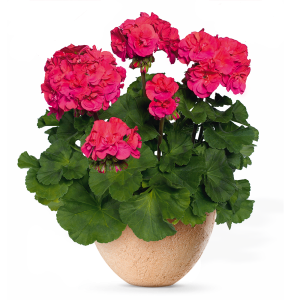 To increase flower number and flower size in your Geranium cuttings, just apply a single foliar application of 1 to 5 ppm solution when flower cluster begins to show color. Direct the spray at the developing flower cluster.
To increase flower number and flower size in your Geranium cuttings, just apply a single foliar application of 1 to 5 ppm solution when flower cluster begins to show color. Direct the spray at the developing flower cluster.
To advance flowering in your Geranium seedlings, just apply a single foliar application of 5 to 15 ppm when the first flower bud begins to develop. Spray the entire plant to the point of run-off in order to advance flowering, and reduce crop time by 10 to 21 days (depending on the variety of Geranium that you are growing).
ProGibb T&O for your Pompom Chrysanthemum Crop:
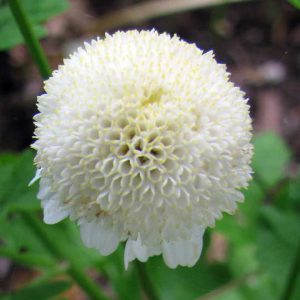
You can use ProGibb T&O to achieve elongated peduncles in your Pompom Chrysanthemum crop by applying a single foliar application of a 25 to 60 ppm solution 4 to 5 weeks after initiation of short days. The foliar spray should be directed towards the flower buds.
ProGibb T&O for your Spathiphyllum (Peace lily) and other Araceae Crops:
 When used correctly, ProGibb T&O can accelerate bloom and increase the number of flowers per plant. In order to achieve this result, just apply a single foliar application of 150 to 200 ppm solution approximately 9 to 12 weeks prior to expected date of sale. Spray the entire plant to the point of run-off, and be sure to thoroughly wet all growing points.
When used correctly, ProGibb T&O can accelerate bloom and increase the number of flowers per plant. In order to achieve this result, just apply a single foliar application of 150 to 200 ppm solution approximately 9 to 12 weeks prior to expected date of sale. Spray the entire plant to the point of run-off, and be sure to thoroughly wet all growing points.
ProGibb T&O for your Cut Flower Crops:
 ProGibb T&O has the potential to dramatically promote flowering in many dicot and some monocot plants grown for cut flower production, as well as to elongate the stems and flowers to achieve the desired stem length for cut flower sale. For many cut flower varieties, such as Sweet William (Dianthus), Statice, Consolida ambigua, Queen Anne’s Lace, Column Stock, and Delphinium, growers can promote plant growth and stem elongation by applying a foliar spray of a 50 to 100 ppm solution when the plants are 4”to 8” in height. Multiple applications can be made, but must be 2-3 weeks apart.
ProGibb T&O has the potential to dramatically promote flowering in many dicot and some monocot plants grown for cut flower production, as well as to elongate the stems and flowers to achieve the desired stem length for cut flower sale. For many cut flower varieties, such as Sweet William (Dianthus), Statice, Consolida ambigua, Queen Anne’s Lace, Column Stock, and Delphinium, growers can promote plant growth and stem elongation by applying a foliar spray of a 50 to 100 ppm solution when the plants are 4”to 8” in height. Multiple applications can be made, but must be 2-3 weeks apart.
ProGibb T&O can also reduce the time to flowering and promote stem elongation in Aster and Statice, and can accelerate plant growth, increase number of flowering stems, increase flower number, and increase uniformity in Gypsophila (Baby’s Breath).
ProGibb T&O for your Bedding Plants, Annual and Perennial Potted Crops, Field-Grown Ornamentals, and Bulb Crops:
 Gibberellic acids can significantly promote plant growth in Bedding Plants, Annual and Perennial Potted Crops, Field-Grown Ornamentals, and Bulb Crops using a very low-concentrated dilution, applied through foliar application. ProGibb T&O is very powerful and active in plant growth functions, so it is recommended that growers start with a solution concentration of just 1 ppm, and apply a single application directly to the plant foliage (unless previous experience with a particular cultivar or growing situation warrants higher use rates). Over-application can result in undesirable results, such as excessive stem elongation or spindly, weakened stems.
Gibberellic acids can significantly promote plant growth in Bedding Plants, Annual and Perennial Potted Crops, Field-Grown Ornamentals, and Bulb Crops using a very low-concentrated dilution, applied through foliar application. ProGibb T&O is very powerful and active in plant growth functions, so it is recommended that growers start with a solution concentration of just 1 ppm, and apply a single application directly to the plant foliage (unless previous experience with a particular cultivar or growing situation warrants higher use rates). Over-application can result in undesirable results, such as excessive stem elongation or spindly, weakened stems.
Another substantial and significant use for ProGibb T&O is to counteract an accidental over-application of a gibberellin-inhibiting PGR such as paclobutrazol (trade names include Piccolo, Piccolo 10 XC, Bonzi, Downsize, and Paczol). If you use any of these growth-inhibiting/growth-controlling PGR products, it is a good idea to have ProGibb T&O on-hand, in the case of a paclobutrazol over-application, or if you need to reverse the effects for any reason.
Always read the label completely before applying ProGibb T&O for any of the use patterns listed in this article.
Results from ProGibb T&O applications are dependent upon timing, rate, frequency of application, and plant vigor at application. ProGibb T&O applications made under slow drying conditions (cool temperatures, low air movement and medium to high relative humidity) will increase absorption by the plant, thus optimizing effectiveness. As a general rule, and to determine optimum use rates, conduct trials on a small number of plants under actual use conditions using the lowest indicated rate. When a range of rates is indicated, use the lowest concentration directed until familiarity is gained.
For more in-depth information into the science and history of Gibberellins in agriculture and horticulture, check out this article as well: https://mycorrhizae.com/progibb-to-use-of-gibberellic-acid-in-ornamentals-cut-flower-and-turf/

